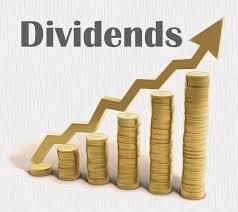
The tax treatment of dividends in the United States depends on whether the IRC (Internal Revenue Code) classifies them as qualified or ordinary dividends (also called non-qualified dividends). Eligible dividends are taxed at the same rates as capital gains tax. These rates are lower than ordinary tax rates.
Ordinary dividend tax rates (generally those paid on common or preferred stock) are the same as the standard federal tax rates or 10% to 37% for fiscal years 2022 and 2023. Investors pay taxes on ordinary dividends at the same rates paid on usual income, such as wages or salaries. Income tax and capital gains tax rates change over time, but the latter has been significantly lower than the former in recent years.
Qualified dividends vs. Ordinary dividends
A dividend is a piece of a company's profits that is paid directly to shareholders. Businesses that offer dividends to shareholders pay a fixed amount per share and are allowed to adjust it up or down each earnings period (usually a quarter) based on company performance. The investor must pay taxes on his dividends, but the amount he pays depends on whether the dividends are qualified or ordinary.
Eligible dividends, which benefit from more favorable tax treatment, must meet certain criteria. They must be issued by US companies listed on major stock exchanges such as Dow Jones or Nasdaq. The investor must hold them for at least 60(sixty) days out of a 121-day holding period. Certain dividends, such as those from an employee share plan or issued by a tax-exempt body, are not eligible for qualified status.
There is no significant difference between eligible and ordinary dividends other than tax treatment.
Tax treatment of qualified dividends
Investors prefer qualified dividends because they are eligible for lower tax rates, meaning long-term capital gains rather than ordinary income. This is true regardless of the investor's tax bracket, although investors make the greatest savings in the first two brackets, where the difference in tax rate between the two types of dividends can be up to 20%.
The eligible dividend tax schedule has only three levels: 0%, 15%, and 20%.
Example of taxation of dividends
To understand the difference these two tax treatments (qualified and ordinary)make, imagine you are an investor with 5,000 shares of Company X earning $2 each in ordinary dividends or $10,000 per year. Let's say you're single and have a taxable income of $50,000 a year, which puts you in the 22% marginal income bracket for ordinary income.
Since ordinary dividends do not receive special tax treatment, you pay 22%, or $2,200, tax on your dividends. However, if your dividend qualifies, you pay an income tax of 15%, or $1,500.
Imagine that the same investor, still single, earns $1 million per year in taxable income, not including dividends, on 50,000 shares of Company X. At $2 per share, your annual dividend is $100,000. Taxed at a marginal rate of 37%, you owe $37,000 in federal tax on dividends if regular but only $20,000 if qualifying, a savings of $17,000.
At what rate are dividends taxed?
If your dividends are eligible, they will be taxed at a capital gains tax rate of 0%, 15%, or 20%, depending on your tax bracket. If your dividends are ordinary (non-qualified), they will be taxed at your normal marginal income tax rate.
Are dividends taxed twice?
Yes, dividends are taxed twice. This concept is known as double taxation. The first set of taxes relates to the profits of a company. Dividends come from a company's profits and are then distributed to shareholders. Shareholders must also pay taxes on the dividends they receive.
How can I reduce the taxes I pay on dividends?
One way to minimize the tax paid on dividends is to try to have eligible dividends taxed at a lower rate than non-eligible dividends. Another method is to open a tax-efficient brokerage account, where you can defer paying taxes until you are in a lower tax bracket when you withdraw from the account.
The Bottom Line
Dividends can be a great way to get income from your investments, but like all income you get, they are also taxable. Depending on the type of dividend, eligible or non-eligible, it will be taxed in the capital gains tax bracket or the ordinary income tax bracket, the former normally at a lower rate.
Summary
A dividend is part of a company's profits that is paid directly to shareholders.
Common dividend rates are the same as standard federal income tax rates; 10% to 37%.
Eligible dividends are taxed at the same rates as the capital gains tax rate, which is lower than normal income tax rates.
The tax treatment of US dividends depends on whether the Internal Revenue Code classifies them as qualified or ordinary dividends.
Those who receive dividends must pay taxes on them.
FOR MORE INFORMATION ON HOW KLSM CPA FIRM PLLC CAN BEST HELP YOU WITH YOUR TAX FILING NEEDS, PLEASE CLICK THE BLUE TAB ON THIS PAGE.
THANKS FOR VISITING.
